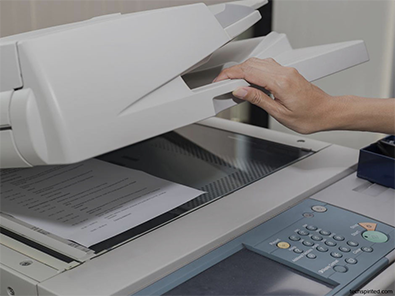Printers have become an essential part of both our personal and professional lives. From printing important documents to scanning and copying, all-in-one printers have made our lives more convenient. However, it’s important to understand that not all printers are created equal. There are distinct differences between home and office all-in-one printers, designed to cater to specific needs. In this blog post, we will explore the variations between these two types of printers and help you make an informed decision when choosing the right one for your requirements.
Purpose and Usage
Home printers are primarily designed for personal use in residential settings. They are suitable for light-duty tasks such as printing documents, school assignments, or family photos. On the other hand, office all-in-one printers are built to handle heavier workloads and meet the demands of a professional environment. They can handle large print volumes, and high-speed printing, and are often equipped with advanced features for enhanced productivity.
Printing Speed and Volume
In a home setting, printing speed may not be a critical factor. Print speed for home printers can vary depending on the model and manufacturer. Generally, home printers have a lower print speed compared to office printers. Home printers typically offer print speeds ranging from 8 to 20 pages per minute (ppm) for black and white documents. For color printing, the speed is usually lower, averaging around 4 to 10 ppm.
It’s important to note that these figures are approximate and can vary depending on factors such as the complexity of the document, print settings, and the printer’s technology. Additionally, different print modes, such as draft mode or high-quality mode, can affect the printing speed.
However, in an office environment where time is of the essence, a faster printing speed can significantly improve productivity. Office all-in-one printers are built to handle larger print volumes, offering faster printing speeds per minute, reducing waiting times, and allowing employees to focus on other tasks.
Print Quality
Print quality is an important consideration when choosing a printer, regardless of whether it’s for home or office use. However, the level of importance may vary based on the specific requirements. Home printers usually offer good print quality for documents and photos, but they might not provide the same level of precision as office printers, which are designed to produce professional-looking documents with crisp text and vibrant colors.
Connectivity Options
Home printers often come with basic connectivity options such as USB and wireless connectivity, allowing users to print directly from their smartphones, tablets, or laptops. Office all-in-one printers, on the other hand, usually offer more advanced connectivity options. They may have built-in Ethernet ports, allowing for seamless network integration, or even support for cloud printing services, enabling employees to print from anywhere within the network.
Paper Handling and Document Feeder
Office all-in-one printers are equipped with larger paper trays and higher-capacity document feeders, enabling them to handle a greater volume of paper. This becomes crucial in an office setting where large print jobs are common. In contrast, home printers often have smaller paper trays and document feeders, as they are typically used for lighter printing tasks.
Additional Features
Office all-in-one printers often come with additional features tailored to the needs of a professional environment. These may include duplex printing (printing on both sides of the paper), automatic document feeders for scanning or copying multiple pages at once, and built-in security features to protect sensitive information. Home printers, while more focused on basic functionalities, may offer additional features such as memory card slots or LCD screens for direct photo printing and easy navigation.
Conclusion
Choosing the right printer depends on your specific requirements and usage patterns. Home all-in-one printers are ideal for light-duty tasks, occasional photo printing, and personal use, offering convenience and affordability. Office all-in-one printers, on the other hand, are designed to handle high-volume printing, faster speeds, and advanced features to meet the demands of a professional setting. By understanding the differences outlined in this blog post, you can make an informed decision and select the perfect all-in-one printer that aligns with your needs.



